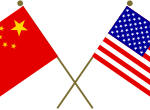 Twenty-five years ago, the American National Standards Institute (ANSI) convened a working group of public and private sector representatives to draft the first version of a standards strategy for the United States. After much work, that document was approved. Every five years since then, the United States Standards Strategy (USSS) has been reviewed and updated to ensure that it remains responsive to the opportunities and the challenges of an increasingly volatile and important standards ecosystem.
Twenty-five years ago, the American National Standards Institute (ANSI) convened a working group of public and private sector representatives to draft the first version of a standards strategy for the United States. After much work, that document was approved. Every five years since then, the United States Standards Strategy (USSS) has been reviewed and updated to ensure that it remains responsive to the opportunities and the challenges of an increasingly volatile and important standards ecosystem.
Now the fifth draft of the USSS has been released, and you’re invited to provide your thoughts on what the final version should cover, and what it should seek to achieve.
I’ve been on each of the review committees and working groups since 2005, and believe that this year’s draft is the most important version yet. Most significantly, since the last revision the standards marketplace has become increasingly politicized, with standards moving from the background of trade policy to the foreground of national competitiveness. Canada, the EU, and most notably, China, have released their own strategies in recent years, with China’s National Standards Development Outline mapping out its China Standards 2035 vision for an accelerated and broadened domestic standards program and a greater presence and leadership role on the global standards development stage.
Many in the standards community believe that fears over Chinese standards dominance are over-blown, but there is no question that the PRC dedicates vastly more government resources to standards development than does the U.S. government. That’s not a surprise, because in 1995 Congress passed the Technology Transfer and Advancement Act, which formally recognized the private sector’s lead role in standards development in this country. But it’s also true that the technology sector over the last decade has shifted more and more resources away from standards development and into supporting open source software projects. The result has been fewer career professionals in the standards area, and fewer technical contributions to standards organizations.
As a result, and taken together with the explosion of interest in trade policy under the Trump administration, concerns have been voiced over America’s competitiveness in the standards arena. Here’s a recent example from the Op/Ed page of the Wall Street Journal tellingly titled If the U.S. Doesn’t Set Global Tech Standards, China will.
But recognizing a challenge is different than meeting it, which is what the USSS does, articulating the value of private sector-led, market driven standards solutions, establishing a shared vision for the future, and guiding how the U.S. should develop standards and participate in international standardization in the years ahead.
This is where you come in.
ANSI will welcome your input, and hopes you will send your comments to usss@ansi.org by September 19. It particularly invites you to address the following questions:
- Does the strategy address the most significant changes in the standards environment since 2020?
- Does the draft effectively communicate the value of our private-sector-led system and our commitment to international standards?
- Are the strategy’s key messages clear, compelling, and forward-looking?
- What considerations should be taken into account to inform effective implementation of the Strategy?
At six readable pages, the USSS is not a heavy lift. I encourage you to take a few minutes to give it a read. Better yet, share your thoughts, and make a difference for American competitiveness at home and abroad.